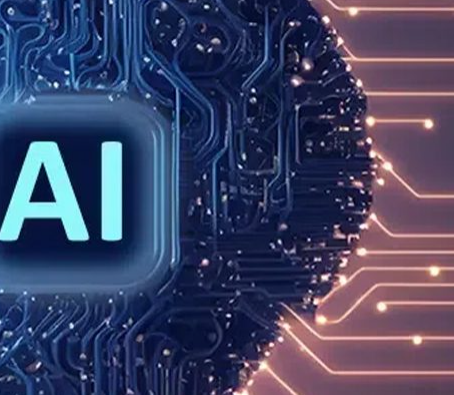
Artificial intelligence (AI) has significantly transformed industries and everyday life in recent years. Its ability to perform tasks and solve problems at an unprecedented rate has made it a key player in fields like healthcare, finance, and entertainment. At the heart of this technological advancement lies neural networks, a fundamental component that drives AI systems. Understanding how neural networks work is essential for grasping the incredible capabilities of AI.
In this blog, we’ll dive into the basics of neural networks, exploring how they function and the role they play in powering AI-driven tools and applications.
What Are Neural Networks?
Neural networks, also known as artificial neural networks (ANNs), are algorithms that enable machines to process data and learn patterns from it. They are a subset of machine learning, specifically designed to mimic the way the human brain works. Just as the brain’s neurons are connected to one another, artificial neurons in a neural network are interlinked to process and transfer data.
These networks have become the backbone of AI, allowing systems to perform complex tasks like speech recognition, image classification, and even decision-making. They help AI systems understand relationships within vast datasets, which is key to solving problems without human intervention.
Core Components of Neural Networks
Neural networks consist of three main layers:
- Input Layer: This layer receives data for the network to process.
- Hidden Layers: These layers process the input data. The complexity of the problem determines how many hidden layers are involved.
- Output Layer: The output layer produces the result, such as a classification or prediction.
The information flows through these layers during the learning process, adjusting the network’s weights to minimize errors and improve predictions.
How Do Neural Networks Operate?
Neural networks use a feedforward process, where data passes from the input layer through one or more hidden layers and finally reaches the output layer. Each neuron in the network performs a simple mathematical operation on the incoming data and sends the result to the next layer.
The neurons are connected by weighted links, which indicate the strength of the relationship between them. During training, these weights are adjusted to minimize the difference between predicted results and the actual outputs, making the network more accurate over time.
To model complex relationships within the data, neural networks employ non-linear activation functions. These functions, like the sigmoid, ReLU (rectified linear unit), and tanh, help the network understand intricate patterns and produce more meaningful outputs.
Types of Neural Networks
Neural networks come in various types, each designed to solve specific kinds of problems:
- Feedforward Neural Networks (FNNs): These are the simplest type, where data moves in one direction from the input to the output. They’re typically used for tasks like classification and regression.
- Convolutional Neural Networks (CNNs): Commonly used in image and video recognition, CNNs apply filters to input data to capture features and patterns, making them ideal for tasks like object detection and facial recognition.
- Recurrent Neural Networks (RNNs): Unlike FNNs, RNNs have loops in their structure, allowing them to maintain memory over time. This makes them suitable for processing sequential data, such as text or speech, where context from earlier steps is important.
Why Are Neural Networks Important for AI?
Neural networks are crucial to AI because they allow systems to make intelligent decisions with little human intervention. They excel at identifying complex patterns in data, which is particularly useful for tasks like language translation, image classification, and even personalized recommendations.
For instance, neural networks can help AI understand nuances in language, such as recognizing that “Where can I buy a new pair of sneakers?” and “Where can I find quality snowshoes?” involve different products, even if the phrasing is similar. By training neural networks to recognize these differences, AI can process requests more accurately.
Training Neural Networks
Training a neural network requires labeled data, which consists of input data paired with correct output labels. The network learns by comparing its predictions to the true labels and adjusting its internal weights to minimize errors. This process is guided by a loss function, which quantifies the difference between predicted and actual results.
Common loss functions include:
- Mean Squared Error (MSE): Often used for regression tasks, MSE calculates the average squared difference between predicted and actual values.
- Cross-Entropy: Used for classification tasks, this function measures the difference between predicted and true class probabilities.
- Binary Cross-Entropy: A variation of cross-entropy used for binary classification tasks, where the output is either 0 or 1.
Real-World Applications of Neural Networks
Neural networks have a wide range of applications across various industries:
- Image and Speech Recognition: Neural networks are behind the powerful image and speech recognition technologies used in apps like Google Photos and voice assistants like Siri and Alexa.
- Natural Language Processing (NLP): Neural networks have revolutionized NLP, enabling AI to understand and generate human language. Models like GPT and BERT rely on neural networks to process language with human-like accuracy.
- Autonomous Vehicles: Self-driving cars use neural networks to interpret sensory data, make decisions, and control the vehicle in real-time.
- Medical Imaging: Neural networks are used in medical diagnostics to analyze images like X-rays and MRIs, detecting patterns that may be missed by the human eye.
- Recommendation Systems: Platforms like Netflix and YouTube use neural networks to recommend content based on user preferences and behavior.
Conclusion
Neural networks are the driving force behind many AI applications, enabling systems to process data, learn patterns, and make decisions without constant human intervention. While the technology is still evolving, neural networks have already made significant strides in fields like image recognition, language processing, and autonomous systems.
As AI continues to advance, neural networks will play an even greater role in shaping the future of technology, driving innovation across industries and enhancing the capabilities of smart systems.











